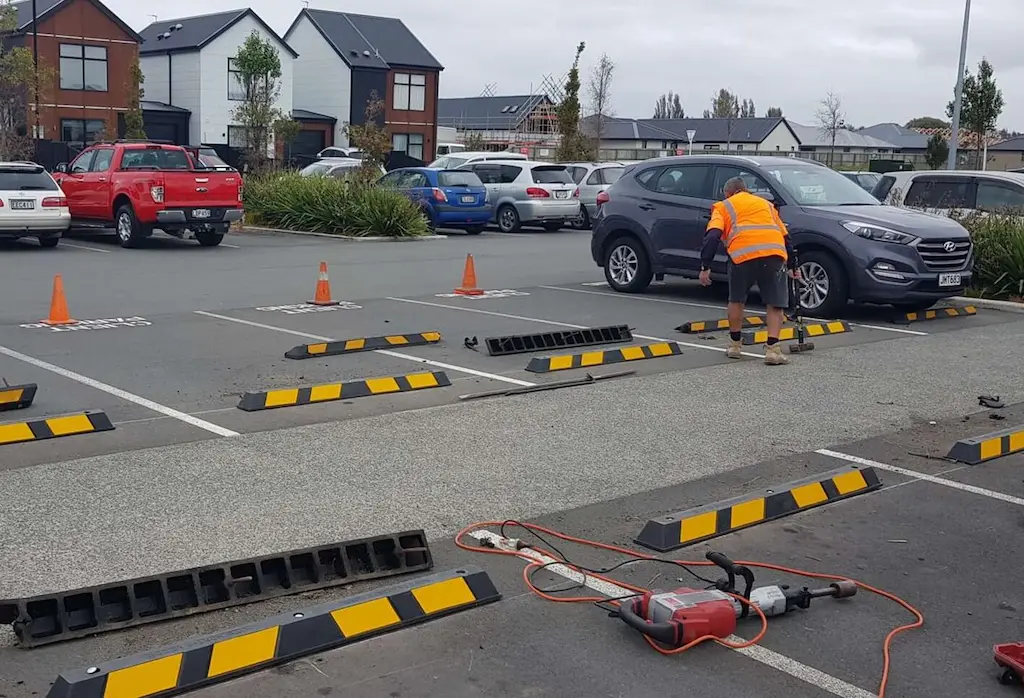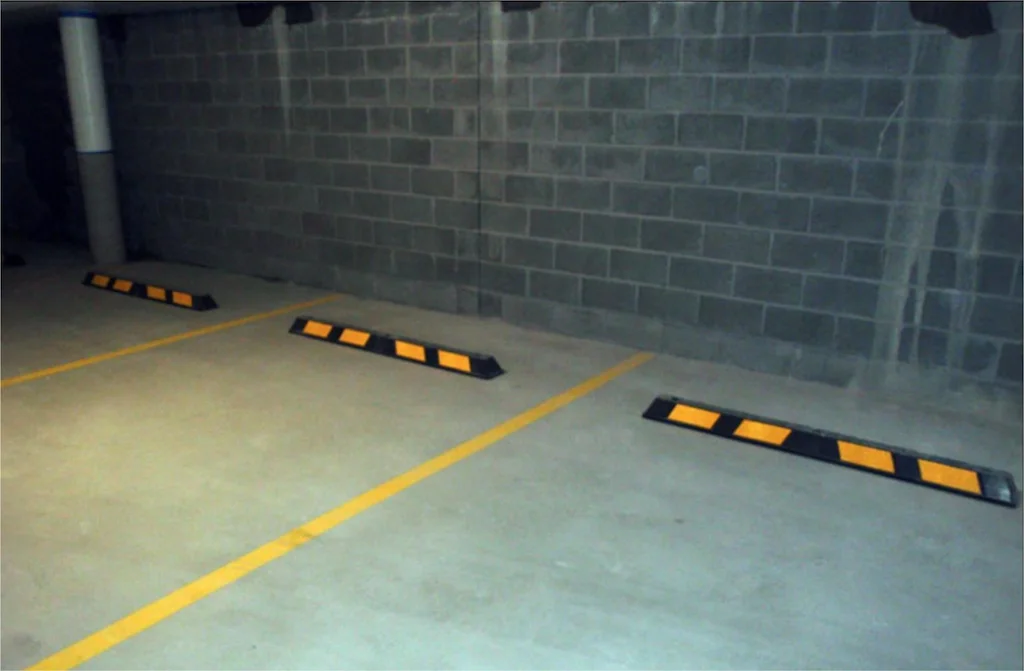How to install a parking bumper easily?
Over the years, parking bumpers have been used to protect against property damage by alerting drivers upon reaching the edge of the parking space.
However, despite years of practice, drivers repeatedly make mistakes while parking in the parking facility or driveway. For instance, a driver may underrate or overrate a parking spot’s size or be confused by mirrors.
To eliminate such instances while car parking, these car parking bumpers are strategically located to improve pedestrian safety and warn drivers when approaching the edge of the parking lots.
Furthermore, hitting the parking bumper while reversing helps the driver stop the vehicle before hitting another parked car.
Parking lot bumpers can be applied in different commercial and private parking areas. Among them, their well-known benefit is to prevent vehicle collisions in street parking, parking garage, parallel parking, reverse parking, and any restricted area.
So, what do you need to know while installing parking bumpers in a protected parking zone? Read this article to acquire useful tips you did not know about parking bumpers.
For more information, feel free to discover here: All You Need to Know About Parking Blocks.
How Long will it Take to Install a Parking Bumper?
Installation of all-weather parking bumpers is a great way to help stop rolling cars from damaging properties, hitting a motorist, and other parked vehicles. Following the proper steps and guidance, installing the wheel stop should not take much time.
However, a considerable amount of time is important to install the parking blocks correctly on the parallel parking using a 3m tape distance.
This solves problems such as scratches from other cars, door protection, rear bumper guard protection, license plate holder protection, back bumper cover protection, grill guard protection, headlights, and front bumper protection.
Here are the steps to be followed when installing parking stops within a considerable time.
- Select the location of the parking lot.
- Map out parking spots
- Gather materials
- Transport theparking blocks
- Measure and set parkingstops in place.
- Drill and hammer thelag bolts into the ground.
While choosing a parking bumper to install, you should select the one that meets your needs, especially for cars like trucks, an SUV, Jeep Wrangler, Dodge RAM, Toyota Hundra, Mustang, or other heavy-duty off-road vehicles.
So, which is the best option parking wheel stop for you to select for your pavement?
It would be best to consider some of the following before selecting the car stops of your choice.
- The installation cost.
- Possibility of the parking bumper covers collapsing when hit by an obstacle or heavy truck.
- Effect of heavy sunlight on the parking bumper of your choice.
With the right tools installing a parking bumper should take a few minutes. However, the amount of time spent installing parking bumpers will also depend on the size of the parking area. All that is required of you is to mark the area, drill holes, and eventually fix the wheel stops with bolts.

Tools needed, bolts, and fixings
Use the right tools and gadgets to do the job correctly while installing wheel stops. Here are the tools you will need when installing wheel stops:
- A hammer drill with a proper drill bit. In most cases, the hammers should be at high speed.
- Lag bolts, which are commonly supplied with wheel stops
- A hammer
- A socket
- A hand broom or an industrial vacuum.
The tools required depend on the material of the wheel stop you intend to install – some are made of polished stainless steel or plastic or rubber, or Plastic-Rubber composite.

Steps To Properly Install a Wheel Stopper
If you are looking to install wheel stops in your parking area that experiences high pedestrian or vehicle traffic, here is a set of complete installation steps that will assist you in installing them accurately.
- Identify the place of installation.
- Place your wheel stop at the place of installation and drill a guide hole in the concrete through each hole using a masonry drill bit.
- Remove the wheel stop and clear the dust and debris accumulated during the application area’s drilling process.
- Place the wheel stop over the holes and line up
- Tighten the screw using the socket.
FEEL FREE TO CONTACT US
OUR FACTORY
Parking Block Direct is a well-known wheel stop manufacturing company located in Qingdao.
Since 2013, we have produced and distributed premium-quality products across different countries to help people improve vehicular and pedestrian safety in public parking lots and garages.
OUR WORLDWIDE DELIVERY
We ship our products in reliable packing worldwide. We ensure our products are delivered to your doorstep in the best possible condition for your public parking garage.
No matter where you live, contact us and learn about the shipping process, delivery date, or any other questions.
How Far Should You Place the Parking Stop from The Wall?
Parking stops are important road safety management tools used to park cars in limited areas such as homes and garages for an accurate and professional parking lot. Parking on wheel stoppers restricts the wheels from hitting the parking lot walls or cars parked in the parking lot preventing damage.
Although it is obvious that wheel stops are used in parking garages, it does not mean they should be placed randomly without the knowledge and the standards of placing them.
Regarding the distance, you should place the wheel stop in consideration of the wall; it all depends on the direction of the parking and easy towing.
Normally, there are front-in and rear directions of parking sites, which is the same for their distance to the wall. For instance, if the encroachment to the wall is required, the encroachment at the parking end is not required and, therefore, positioned at the rear position, and cars are needed to back in.
Therefore, front parking sites should have a distance of about 2.5 feet from the parking wall and keep a 3,5 feet wheel stop distance for the rear parking side. This distance is essential in preventing accidents in the parking area.

Conclusion
Parking bumpers are meant to assist drivers in determining the appearance of a parking lot by converting accident-prone parking areas into organized danger-free zones.
For many business owners, it is their dream to keep their parking lots safe for their visitors by eliminating any accident that is most likely to happen in the parking area.
Using the parking bumpers correctly, the parking areas should be user-friendly, secure, organized, and delightful. Using wheel stops in the wrong places can confuse drivers making it hard for vehicles to enter and exit the parking zones. Therefore, the parking bumpers should be placed in the right place in the parking area. Although parking bumpers are meant to restrict vehicles from crossing the boundary in parking spaces, if they are not used correctly, they can constitute injuries to pedestrians.
If heavy materials are used on them, concrete parking blocks can be dangerous and cause serious problems. Moreover, drivers should be careful while driving around the parking area because the parking bumpers made of concrete can damage the front part of your car badly.
In short, parking bumpers, like speed bumps and rearview mirrors, are vital traffic management equipment that has become compulsory in any parking area.
So it is important to know how to install wheel stops, I hope this blog will be useful to you.
For further information, feel free to check the following pages:
